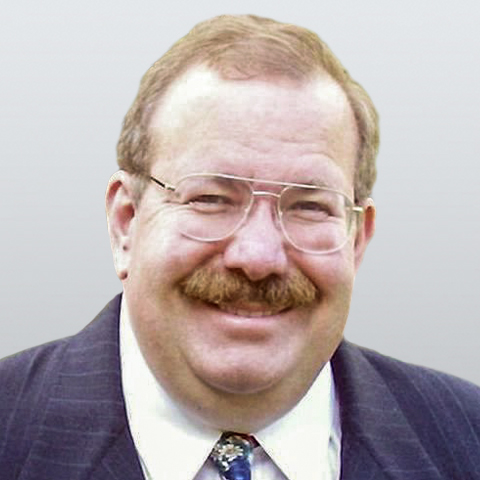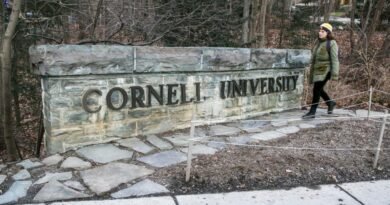Chapman Conference Advances Water Solutions
Distressed Patriotic Flag Unisex T-Shirt - Celebrate Comfort and Country $11.29 USD Get it here>>

Commentary
The main takeaway from the Chapman University Water Abundance Conference held Thursday, Sept. 15, at the school’s campus is: California’s water issues are difficult but can be solved.
The all-day event’s presentations and discussions are online for free here and worth watching. The event occurred in the midst of the third year of yet another drought, shortly after the severe 2012-16 drought.
Mathematics professor and university President Daniele Struppa kicked off the conference by noting water is “not just a scientific problem,” so the need is “connecting science and society by bringing different disciplines together,” such as meteorologists, sociologists, and politicians.
Advancing that theme was the conference’s moderator, Steven Greenhut, the western region director of the R Street Institute think tank and author of the recent book, “Winning the Water Wars: California can meet its water needs by promoting abundance rather than managing scarcity.” (Video interview here.) He said the challenge is, “How we can get more water into the system, instead of just fighting over the static pie?”
California, he said, needs “to create bounty so we can have a growing and prosperous state, to meet the needs of people. We know the answer. We’ve just been fighting over scarcity. There are a lot of interests that like that scarcity. The bottom line is, it’s an engineering issue. It’s a political will. And to some extent an ideology problem. We haven’t built any major new state infrastructure since the 1970s, when the state population was half the size it is now.”
I would add in the 1970s, Jerry Brown, during his first stint as governor, announced a perpetual “era of limits.” Instead, Apple Computer and other companies sparked the personal computer revolution. And at the national level, starting in 1981, President Reagan, himself a former California governor, propelled strong growth through the decade with tax and regulation cuts. California’s population grew by 6 million, but the infrastructure never caught up.
Greenhut complimented Gov. Gavin Newsom’s new water resilience plan because it “at least talks about building infrastructure and abundance. Where there’s a will, maybe there will be water.” In particular, Newsom has proposed a tunnel be built under the San Joaquin River Delta to send fresh water to Southern California, keeping that separate from the saltwater that comes into the Delta from the Pacific Ocean.
Decades of Neglect
Steve Sheldon is president of the Orange County Water District, director of District 5, and an elected member of the Board of Directors. He lamented, “Over the past 50 years, the state of California hasn’t done very much” on water infrastructure due to a change of priorities. The State Water Project, bringing water down to Southern California, is at only 5 percent of capacity. That’s due to the Delta Smelt controversy, amidst which environmentalists have said the water pumps are killing the tiny fish. But lately it’s been hard to find any of the fish living in the wild.
He pointed to “Bulletin No. 3: The California Water Plan” (pdf), from 1957. He said its priorities were bringing water supplies to citizens, protecting against floods, and advancing hydro power (dams), with wildlife and fishing being incidental.
“Now that has been reversed,” he said. The plan of the Department of Water Resources instead promotes “managing climate change” and “racial equity.”
Taking an analogy from war and football, he said the approach should be, “The best defense is a good offense: build more.”
When asked why there’s almost no building of new water infrastructure, Sheldon replied, “It’s about climate change” at the California Department of Water Resources. “The less water is used, the more they meet their climate goals by 2035.”
Greenhut then quipped, “It’s a fight within the agency that provides the water whether it should even provide the water.”
Grand Jury on Orange County Water Consolidation
Sheldon also addressed another controversy over a June 22 Orange County Grand Jury report (pdf) that recommended, in the report’s words, two water agencies “consolidate their resources and establish a unified voice to lead the County more efficiently in its water policies and planning.”
The two agencies are Sheldon’s Orange County Water District and the Municipal Water District of Orange County.
He said the consolidation would reduce staff, provide economies of scale, and save at least $4 million a year.
Conservation Solution?
A panel was also held on whether conservation can be the main policy solution to the water shortage. After 38 years in the water industry, Lisa Ohlund retired in 2020 from the East Orange County Water District. “Conservation is the answer,” she said. “We can conserve our way out of any drought we have. Due to climate change, California’s reservoirs are empty.”
Although the ongoing drought sometimes is described as one of the most severe on record, she said through August it actually was only the 18th driest—and the early September monsoon will drop it to the level of the “20s or 30s.”
The worst drought, she said, was from 1976-77. And the Los Angeles Department of Water and Power provides the same amount of water to residents and businesses as it did 40 years ago, yet the population has increased by 1 million.
“Stop saying conservation. The better way is efficiency,” responded Paul Cook, the general manager of Irvine Ranch Water District. “You should be efficient all the time. If we’re efficient all the time, we’ll go a lot further.”
He pointed out only recently did Sacramento—the city whose state legislators and bureaucrats regulate everybody else—install water meters in homes.
“Just don’t waste it,” he urged. “If you look around, and there are not a lot of lawns, that’s OK. But you also can change lawns to Southern California-friendly,” meaning with sparse vegetation needing water.
Next, Tom Piechota, a professor at the Chapman University School of Engineering and researcher into climate impacts on regional water resources, talked of his recent “water road trip” to the Delta. (I’ve driven around there myself and highly recommend visiting its quaint towns and funky restaurants.)
“No, we’re not going to conserve our way out of it,” he said in response Ohlund. “There’s no silver bullet.” Instead, the solutions are combination of “construction, conservation, and management.”
He advocated “using technology for efficiency,” such as using new high-tech computer programs and imaging maps to find ways to cut water use, such as on golf courses.
“We’ve become much better at short-term forecasting,” he said, which “allows for efficiencies for how much we’re releasing. That’s free. It doesn’t involve billions of dollars of new building.”
Delta History
Curt Schmutte, a consultant and retired Delta water manager, gave a detailed history of the Delta. He pointed out two-thirds of California’s population lives in Southern California, but two-thirds of the water is located in Northern California. So the big problem is always transferring the water from north to south. That water flows through the Delta, which is also crucial to the Bay Area’s water.
The Delta didn’t even exist 7,000 years ago, but just was rivers. And around 100 years ago, it was cleared for farming, losing 98 percent of its wetlands. The “future Delta” will need to create large areas for habitat and restore the ecosystem.
The real problem for the smelt is other fish, mainly bass, have been introduced and are predators. But the bass fishing industry, catering to tourists, is powerful. Restoring “a substantial part” of the habitat would let the smelt and other native fish live in harmony with the bass.
“We need to separate the California water supply from Delta ecosystem,” he urged. “Those two cannot exist concurrently.” The problem is “politics,” because of a “large contingency doing everything they can to stop” the tunnel project, which under Brown’s earlier proposal was two instead of Newsom’s one tunnel.
He brought up the signs I’ve also seen around the Delta that read, “Stop the Tunnels.”
However, he said, the current Delta ecosystem is eroding and cannot last as it is. “The Delta is doomed if we try to preserve it in its current form,” he warned. “Today we’re using what I call the Band-Aid approach. We’re just patching it together. But we need a long-term solution.”
Capitol Politics and Water Funding
Introducing the panel on Capitol Politics and Water funding, Greenhut quipped of obstructionist environmentalists on water policy, “There’s almost nothing they like, except maybe recycling.”
Assemblyman Jim Patterson (R-Fresno) is the former mayor of Fresno and represents the major agricultural region of eastern Fresno County and part of Tulare County.
“The case I’m going to make is we have a magnificent hydro-conveyance and storage system,” he said. “It has worked but isn’t working now due to runaway bureaucracy. We’re operating these magnificent systems, as if those reservoirs didn’t exist. We’re letting trillions of gallons go out the delta.
“In 2019, almost every reservoir in California was filled. In 2022, every reservoir is bone dry.” He said to imagine the system as like a bathtub. “Water bureaucracies in the state unplugged the bathtub, and the water flowed out. Part of the problem is politics, part is just bureaucracies more interested in their own internal biases.”
He compared the stalemate to the high-speed rail boondoggle and asked, “Can California build anything anymore? The bottom line is: We feed the world. We have the cleanest food” due to high sanitary standards on farms. “If we don’t grow it and ship it and export and use it, we’re going to get inferior agriculture produce and products from other countries” imported to the United States. “That’s not a prescription for healthy food. Agriculture has been replaced by regulators, politics, and extremists.”
He pointed out how agricultural companies and workers are highly adaptive. One example is how they are starting more agave farming, which requires less water.
But unless some compromise is reached, “Central California is going to be in real trouble, and the people will be in real difficulty. The demise of agriculture could happen. I’ve never seen third, fourth, and fifth-generation agricultural people who are so worried about the future of agriculture.
“If we want to damp down the mistrust, we need to step back, take a good hard look, lay down the politics, and ask to find out what’s needed with the best information, data, and engineering. Then price that thing and let’s do it, because I think we can.”
With this year’s $100 billion state budget surplus, he asked, “Why can’t we spend it in the Delta? We need a compromise. If that doesn’t happen, there will be terrible times for the people I represent. Let’s stop the water wars. Let’s get to a water peace accord. Then let’s build it.”
On the same panel, Brett Barbre gave a history of past state building projects, and urged new ones for the state. He has spent over 35 years in the water public policy arena and is a former member of the board of directors of the Metropolitan Water District of Southern California, the Municipal Water District of Orange County, and the Yorba Linda Water District. A month ago he wrote an Epoch Times article, “Delta Conveyance Project: Time to Start Moving Dirt and Stop Throwing Mud.”
He pointed out the State Water Project, begun in 1960, stretches 444 miles long and “can move a drop from Oregon down to San Diego.”
He said the state has six major projects that “make California what it was waterwise. The Bureau of Reclamation was established to create an abundance of water and power so the West could grow. They pushed toward abundance.”
The projects:
- 1913: The first big project, the Los Angeles Aqueduct, opened.
- 1932: Hetch Hetchy “took a federal act to construct. It dammed up the Yosemite Valley for public water use in San Francisco.”
- 1944: The Central Valley Project. “The Feds built most of those facilities. The major one was Shasta Dam.”
- 1939: The Metropolitan Water District built the Colorado River Aqueduct and Parker Dam. In 1936, the “completion of Hoover Dam made it possible. It’s a model we need to emulate today.”
- 1951: Davis Dam on Lake Mojave.
- 1966: Glenn Canyon Dam forming Lake Powell.
Conclusion
It’s clear California’s water problems are solvable. Compromises definitely are needed among environmentalists, farmers, and users in the cities, especially in Southern California. But the obstacles in the past were far greater, yet Californians worked together to build the current systems.
Newsom’s single-tunnel proposal, estimated to cost $16 billion, would be a start. When released in July, the San Francisco Chronicle described it, “The proposed tunnel would allow water shipments to bypass the delta’s sensitive wetlands and aging water infrastructure, thereby protecting and even boosting water supplies for the Bay Area, Southern California and farmland in between.”
One positive element is the state’s population has stabilized, at least for now. The years of 500,000 annual population growth are over. That gives planners a breather, allowing them to concentrate on taking care of the existing population of just under 40 million, while securing adequate water for agriculture.
The Chapman Conference provided excellent background and context for the current situation. The solutions are there. What’s needed is the political will.
Views expressed in this article are the opinions of the author and do not necessarily reflect the views of The Epoch Times.





